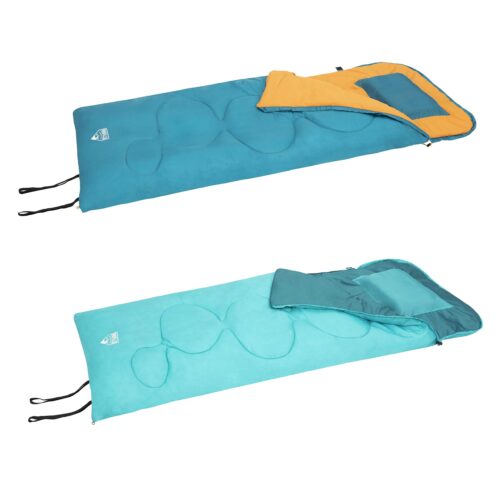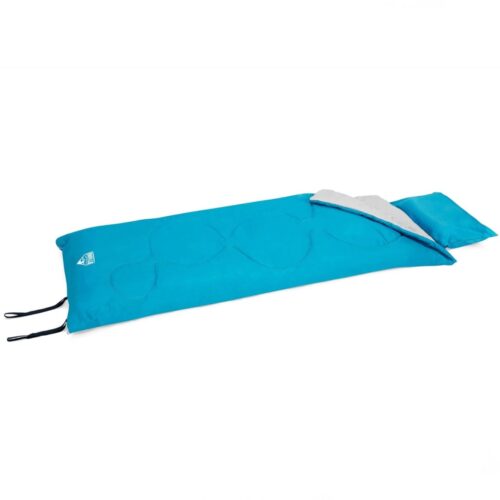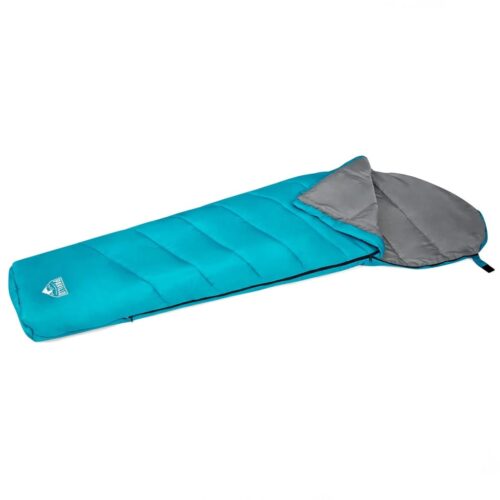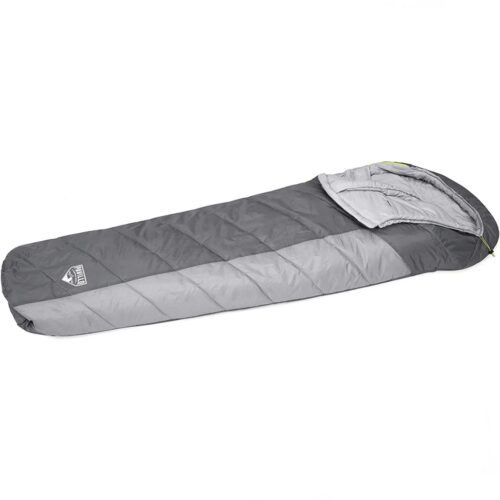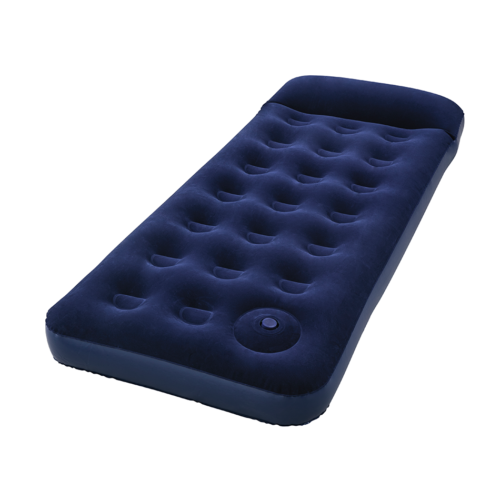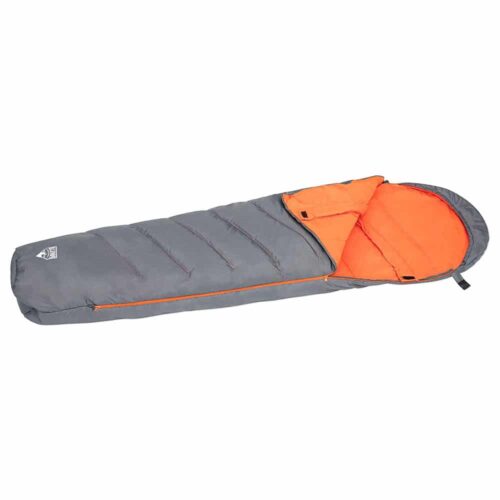Sleeping bags
Showing all 6 results
Certainly! Sleeping bags are insulated, portable bedding solutions primarily used for camping, backpacking, and outdoor activities where overnight stays are required. They offer warmth and comfort by trapping heat close to the body, helping campers maintain a comfortable temperature while sleeping outdoors. Here’s a detailed overview of sleeping bags:
Components of a Sleeping Bag:
- Outer Shell: The outer shell of a sleeping bag is typically made of durable, water-resistant material such as nylon or polyester. It provides protection from moisture, wind, and abrasion.
- Insulation: The insulation inside the sleeping bag is responsible for trapping body heat and providing warmth. Common insulation materials include down (duck or goose feathers) and synthetic fibers (such as polyester or PrimaLoft). Down insulation offers excellent warmth-to-weight ratio and compressibility, while synthetic insulation is more affordable and performs better in wet conditions.
- Lining: The lining of a sleeping bag is the inner layer that comes into direct contact with the user’s skin. It’s often made of soft, breathable fabric for comfort.
- Zippers: Sleeping bags feature zippers that allow users to enter and exit the bag easily. Some bags have two-way zippers, which enable ventilation and temperature regulation. Draft tubes or zipper baffles are often included to prevent heat loss through the zipper.
- Hood: Many sleeping bags have an integrated hood with an adjustable drawcord to cinch around the user’s head, providing additional warmth and protection in cold conditions.
- Foot Box: The foot box is the bottom portion of the sleeping bag where the user’s feet rest. It’s typically designed to provide ample space for movement while keeping the feet warm and comfortable.
Types of Sleeping Bags:
- Mummy Bags: Mummy-shaped sleeping bags taper towards the feet to minimize dead air space and maximize warmth retention. They are lightweight and ideal for cold weather camping.
- Rectangular Bags: Rectangular sleeping bags offer more room for movement and are suitable for warmer climates or casual camping trips where weight is less of a concern.
- Hybrid Bags: Hybrid sleeping bags combine features of both mummy and rectangular bags, offering a balance between warmth, weight, and comfort.
- Double Bags: Double sleeping bags are designed to accommodate two people and are ideal for couples or families camping together.
- Ultralight Bags: Ultralight sleeping bags are designed for backpackers and minimalist campers who prioritize weight savings and packability.
Features to Consider:
- Temperature Rating: Sleeping bags are rated for different temperature ranges based on their insulation and design. It’s essential to choose a bag with a temperature rating suitable for the expected conditions.
- Weight and Packability: Consider the weight and compressibility of the sleeping bag, especially if you’ll be backpacking or hiking long distances.
- Insulation Type: Decide between down and synthetic insulation based on your preferences, budget, and expected weather conditions.
- Size and Fit: Choose a sleeping bag that fits your body size and sleeping habits comfortably. Consider factors such as length, width, and shape.
- Additional Features: Look for features such as stash pockets, draft collars, pillow pockets, and pad compatibility to enhance comfort and functionality.
Overall, sleeping bags are essential outdoor gear that provides warmth and comfort during overnight adventures. Choosing the right sleeping bag based on your needs and preferences can greatly enhance your camping experience
Buy Sleeping bags in Uzbekistan, in Tashkent

